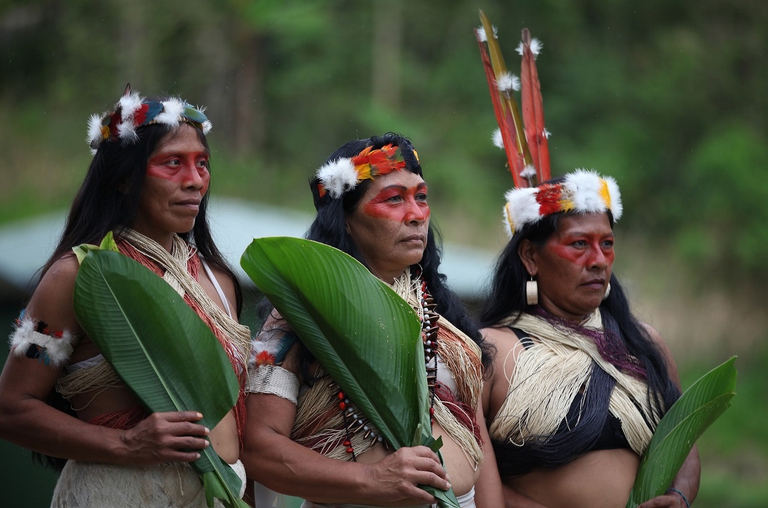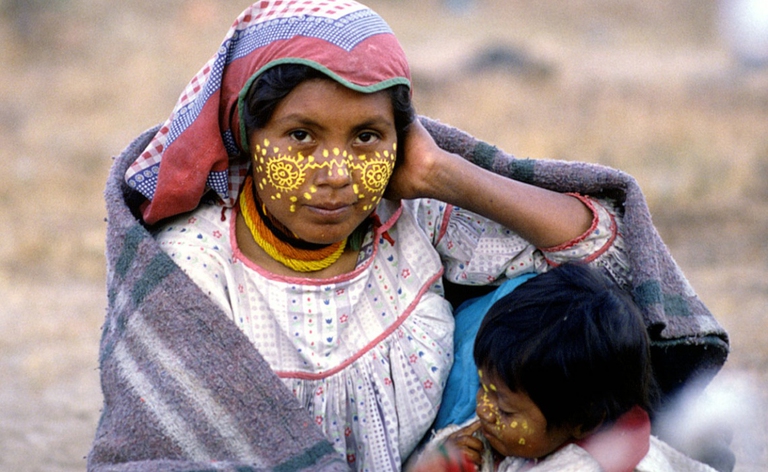
The Amazon became an alternative classroom during the pandemic. Now, the educational forest in Batraja, Bolivia, lives on to teach children and adults the value of nature.
Indigenous peoples usually depend on natural resources to survive. Society, in turn, depends on its role in safeguarding those resources for our wellbeing. The International Union for the Conservation of Nature (IUCN) published a map that highlights how governments and environmental organisations would benefit from an increased cooperation with Central America’s indigenous peoples. The
Indigenous peoples usually depend on natural resources to survive. Society, in turn, depends on its role in safeguarding those resources for our wellbeing.
The International Union for the Conservation of Nature (IUCN) published a map that highlights how governments and environmental organisations would benefit from an increased cooperation with Central America’s indigenous peoples.
The map shows that nearly 40 per cent of Central America’s protected areas are home to indigenous peoples, the guardians of the world’s most fragile ecosystems. The lands inhabited by these populations account for 282,000 square kilometres, 5 times the size of Costa Rica.
The study carried out by the IUCN demonstrates that supporting indigenous people rights is an effective way of safeguarding biodiversity. Respecting their rights implies reducing deforestation and, as a result, CO2 emissions.
According to an assessment of the Woods Hole Research Center, presented at COP21, the forests of the Amazon, the Democratic Republic of Cong0, Mesoamerica, and Indonesia store more than 20 per cent of the CO2 retained by the world’s forests. “You cannot talk about conservation without speaking of Indigenous Peoples and their role as the guardians of our most delicate lands and waters,” said Grethel Aguilar, Regional Director of the IUCN Office for Mexico, Central America and the Caribbean.
The map, realised thanks to satellite images and to the participation of indigenous people, also provides data on the forest coverage of protected areas and neighbouring regions, and is an essential resource for indigenous peoples. “The map is an instrument that allows Indigenous Peoples to advance the recognition, respect and promotion of their rights”, said Ramiro Batzin, Sotz’il Association representative and member of the Central American Indigenous Council (CICA).
Siamo anche su WhatsApp. Segui il canale ufficiale LifeGate per restare aggiornata, aggiornato sulle ultime notizie e sulle nostre attività.
![]()
Quest'opera è distribuita con Licenza Creative Commons Attribuzione - Non commerciale - Non opere derivate 4.0 Internazionale.
The Amazon became an alternative classroom during the pandemic. Now, the educational forest in Batraja, Bolivia, lives on to teach children and adults the value of nature.
A special report from the Yuqui territory delves deep into the dreams, challenges, joys and sadness of one of Bolivia’s most vulnerable indigenous groups.
The Yuqui people of the Bolivian Amazon fight not only to survive in the face of settlers, logging and Covid-19, but to preserve their culture and identity.
Jair Bolsonaro is accused of crimes against humanity for persecuting indigenous Brazilians and destroying the Amazon. We speak to William Bourdon and Charly Salkazanov, the lawyers bringing the case before the ICC.
Our species took its first steps in a world covered in trees. Today, forests offer us sustenance, shelter, and clean the air that we breathe.
Activists hail the decision not to hold the 2023 World Anthropology Congress at a controversial Indian school for tribal children as originally planned.
Autumn Peltier is a water defender who began her fight for indigenous Canadians’ right to clean drinking water when she was only eight years old.
The pandemic threatens some of the world’s most endangered indigenous peoples, such as the Great Andamanese of the Andaman and Nicobar Islands in India.
The Upopoy National Ainu Museum has finally opened. With it the indigenous people of Hokkaido are gaining recognition but not access to fundamental rights.










